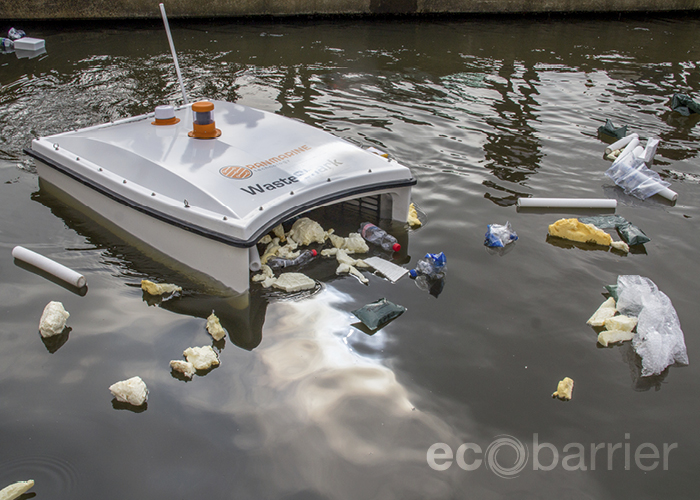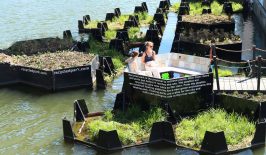More and more projects and ideas are looking to tackle the issue of plastic waste in our oceans. From waste avoidance campaigns to beach cleanups and the ambitious “The Ocean Cleanup” project by Dutchman Boyan Slat – which was launched this month – there are a huge range of solutions around.
Cleaning Up the Sea with Aquadrones
One project joining their ranks comes from South African Richard Hardiman, who launched a pilot project in the port of Rotterdam around two years ago. Hardiman’s concept involves using so- WasteSharks – aquadrones similar to vacuum cleaners that “feed” on plastic in a similar way to whale sharks feeding on their prey as they drift through the ocean. What began as a project in the port of Rotterdam is now also cleaning up the port of Dubai.
Swimming acros the surface of the water, the WasteSharks scoop up plastic waste and microplastics and can collect up to two hundred litres of waste before they have to go ashore to be emptied. They need recharging every sixteen hours.
The drones are available in two models: one with a remote control, as is the case with commercially available flying drones, and another that can move autonomously on the water, with sensors preventing it from colliding with other watercraft.
But it’s not only waste that the drone is collecting in the water – it also gathers data – information about water temperature, depth and quality, as well as factors such as pH, turbidity and the proportions of ammonium, nitrates and chlorides in the water.
With eight million tons of plastic waste ending up in the oceans of our planet every year, ideas like this are a big step in the right direction. But the problem doesn’t begin with plastic in the sea – the root of the issue is our daily handling of it. Avoiding disposable packaging is something that is sometimes easier to achieve than you think. If you need some inspiration: here you’ll find tips on how to avoid plastic in everyday life.
This article is a translation by Mark Newton of the original article by Jasmina Schmidt which first appeared on RESET’s German language site.





